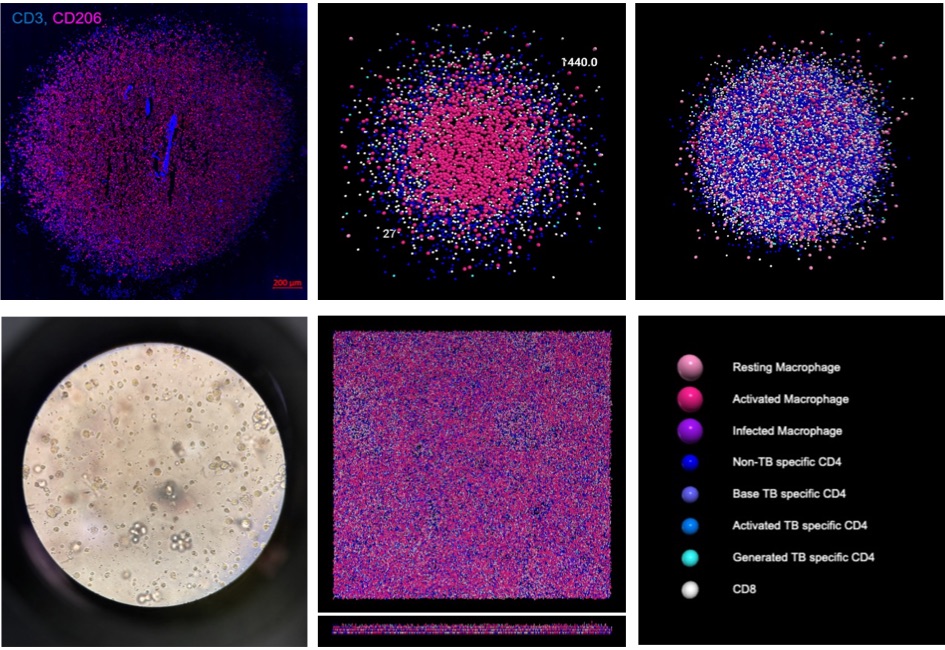Purdue researchers leading the fight against infectious diseases using Anvil
Purdue researchers are using the Rosen Center for Advanced Computing (RCAC)’s powerful Anvil supercomputer to fight infectious diseases such as tuberculosis (TB).
Elsje Pienaar, an associate professor at the Weldon School of Biomedical Engineering, led a team of students, including Lexi Petrucciani, Alexis Hoerter and Xiao Liu, doctoral degree candidates in biomedical engineering, who used Anvil to run simulations of their models and perform data analysis in their quest to understand the interactions between the host immune system and Mycobacterium tuberculosis, the causative bacteria of TB.
The students used agent-based modeling, which simulated the interactions between immune cells and bacteria and the movement of both throughout the environment. These rules are probabilistic and are based on chance, making the simulations computationally intensive. Anvil’s resources allowed the team to find parameter sets that align with experimental data and to continue their work on improving the model.

Pienaar emphasizes that access to Anvil has been a game-changer for this research, providing her team with affordable and powerful computational resources.
"The cluster has more nodes and cores compared to the Brown cluster, which allows more jobs to run in parallel, saving a lot of time for my project simulation,” says Liu.
Adds Petrucciani, “This is a neat achievement for the university because it highlights both the high-performance computing capacity of Purdue University and the computational research taking place here.”
The team intends to continue working on this project and incorporating more components into their models to answer further biological questions, with Hoerter focusing on HIV coinfection and Petrucciani focusing on introducing collagen and other non-immune cells into the model.
Access to Anvil is provided through the Advanced Cyberinfrastructure Coordination Ecosystem: Services & Support (ACCESS), previously the Extreme Science and Engineering Discovery Environment (XSEDE), in which Purdue has long been a partner. Purdue's participation in these national cyberinfrastructure programs has made it easier for faculty to benefit from their resources.
Anvil is a supercomputer built in partnership with Dell and AMD that consists of 1,000 nodes with two 64-core AMD Epyc "Milan" processors each and will deliver over 1 billion CPU core hours to ACCESS each year, with a peak performance of 5.3 petaflops. It serves as an experiential learning laboratory for students to gain real-world experience using computing for their science and supports machine learning and artificial intelligence applications with its 16 nodes each with four NVIDIA A100 Tensor Core GPUs.
Learn more about Anvil and its computational capacity here.
